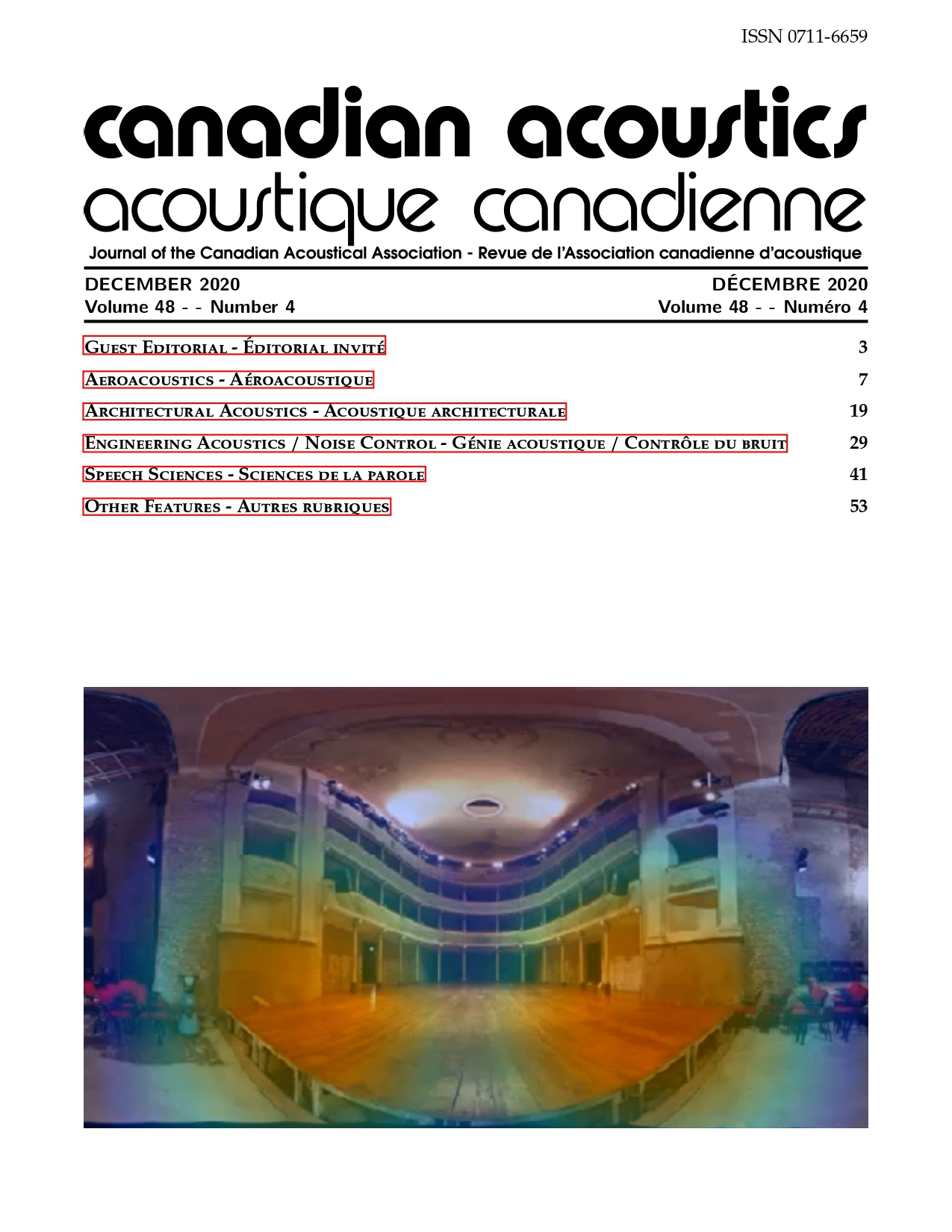Variation in the Acoustic Measurement of Earbud Earphones in an Anechoic Chamber Due to Changes in the Earphone Placement in Ear Concha
Keywords:
earbud earphone, frequency response, Human ear, Sound pressure level, total harmonic distortionAbstract
The growth of 4C products encouraged by innovations has stimulated the persistent development of earphones for high-quality sound reproduction. A typical earbud earphone (EE) is located in the concha of the human ear facing an ear-canal. The placement of earphones in the concha plays a remarkable role in the sound pressure level (SPL) response of an earphone. In this study, ten earphones (E1-E10) were tested for the SPL and total harmonic distortion (THD) response using head and torso simulator (HATS) in an anechoic chamber. The SPL and THD responses of all earphones at position-1 and orientation-1 were declared as a benchmark and a characteristic earphone signature. Hence, based on the responses of all earphones at all orientations and positions, it is concluded that there is a variation in the SPL and THD responses due to change in position and orientation of earphone in the concha. Based on the proposition presented in the work and the safe daily sound exposure, it has been resolved that the variation in the SPL affects the perceived loudness of music/sound and can cause significant differences in the daily sound exposure limit for a human being.
Additional Files
Published
How to Cite
Issue
Section
License
Author Licensing Addendum
This Licensing Addendum ("Addendum") is entered into between the undersigned Author(s) and Canadian Acoustics journal published by the Canadian Acoustical Association (hereinafter referred to as the "Publisher"). The Author(s) and the Publisher agree as follows:
-
Retained Rights: The Author(s) retain(s) the following rights:
- The right to reproduce, distribute, and publicly display the Work on the Author's personal website or the website of the Author's institution.
- The right to use the Work in the Author's teaching activities and presentations.
- The right to include the Work in a compilation for the Author's personal use, not for sale.
-
Grant of License: The Author(s) grant(s) to the Publisher a worldwide exclusive license to publish, reproduce, distribute, and display the Work in Canadian Acoustics and any other formats and media deemed appropriate by the Publisher.
-
Attribution: The Publisher agrees to include proper attribution to the Author(s) in all publications and reproductions of the Work.
-
No Conflict: This Addendum is intended to be in harmony with, and not in conflict with, the terms and conditions of the original agreement entered into between the Author(s) and the Publisher.
-
Copyright Clause: Copyright on articles is held by the Author(s). The corresponding Author has the right to grant on behalf of all Authors and does grant on behalf of all Authors, a worldwide exclusive license to the Publisher and its licensees in perpetuity, in all forms, formats, and media (whether known now or created in the future), including but not limited to the rights to publish, reproduce, distribute, display, store, translate, create adaptations, reprints, include within collections, and create summaries, extracts, and/or abstracts of the Contribution.


